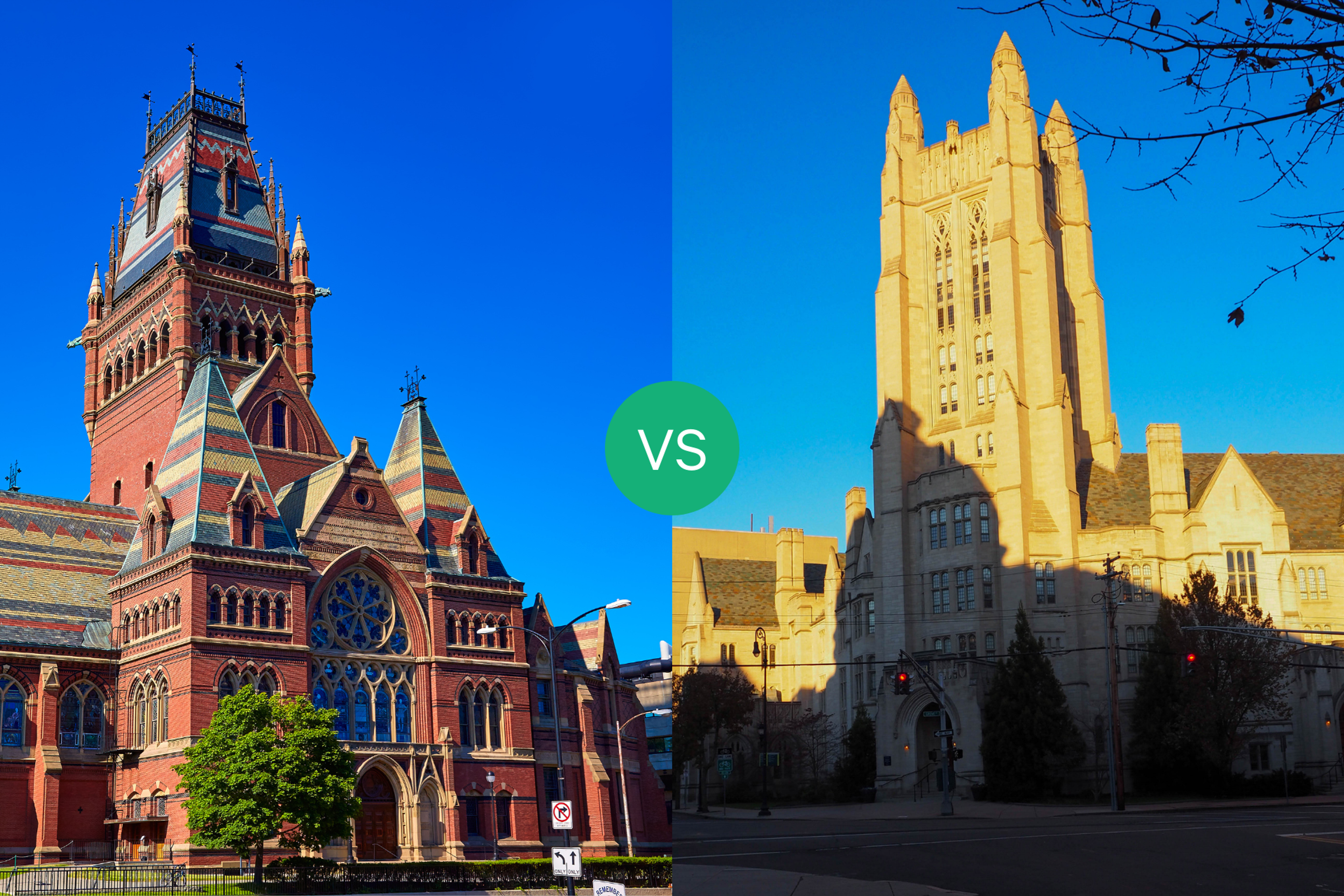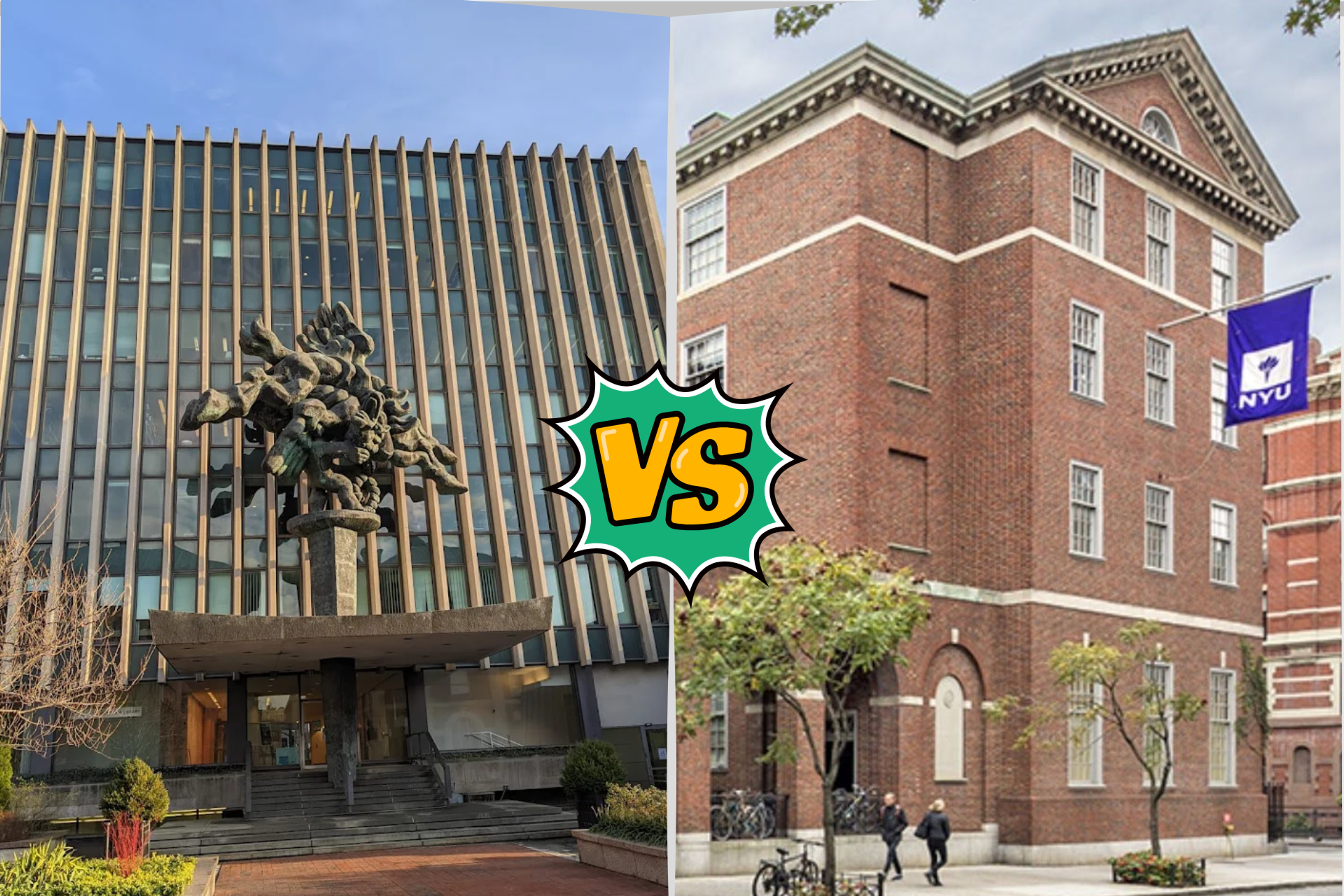Stanford Law School Vs. Harvard Law School: An In-Depth Comparison
Are you torn between attending Stanford Law School or Harvard Law School? Our in-depth comparison article breaks down the differences in curriculum, faculty, location, and more to help you make an informed decision.
Posted June 13, 2025

Join a free event
Learn from top coaches and industry experts in live, interactive sessions you can join for free.
Table of Contents
If you're considering attending law school, you’ve likely heard of two of the most prestigious law schools in the world: Stanford Law School and Harvard Law School. While both schools offer exceptional programs, there are a few key differences between the two. In this article, we'll dive into the history, admission criteria, curriculum, class size, faculty, campus life, career opportunities, student organizations, tuition fees, alumni network, rankings, and reputation of each school to help you decide which one is right for you.
The History and Evolution of Stanford Law School and Harvard Law School
Stanford Law School was founded in 1893, and is located on the Stanford University campus in California. Originally, the school offered a two-year program, but that was later extended to three years. Today, Stanford Law School is known for its cutting-edge research and interdisciplinary approach to legal education.
Harvard Law School, on the other hand, was founded in 1817 and is one of the oldest law schools in the United States. It's located in Cambridge, Massachusetts, and has a long history of producing influential lawyers and scholars. Harvard Law School is renowned for its faculty and its reputation as a powerhouse in legal academia.
Despite their differences in age and location, both Stanford Law School and Harvard Law School have played significant roles in shaping the legal landscape of the United States. Stanford Law School has been at the forefront of legal innovation, with its emphasis on interdisciplinary studies and its commitment to public service. Harvard Law School, on the other hand, has produced some of the most influential legal minds in history, including former U.S. Presidents Barack Obama and Franklin D. Roosevelt. Both schools continue to attract top talent and produce graduates who go on to make a difference in the legal profession and beyond.
Admission Criteria: How to Get into Stanford Law School and Harvard Law School
Both Stanford Law School and Harvard Law School have highly competitive admission processes. While the specific requirements vary between the two schools, they generally consider a combination of factors such as academic achievements, standardized test scores, letters of recommendation, personal statements, and extracurricular activities.
One important factor that both schools consider is the applicant's undergraduate GPA. While there is no specific minimum GPA requirement, a high GPA can significantly increase an applicant's chances of being accepted. Additionally, both schools place a strong emphasis on the LSAT (Law School Admission Test) scores, which are used to assess an applicant's critical thinking, analytical, and logical reasoning skills.
Another important aspect that both schools consider is an applicant's work experience. While it is not a requirement, having relevant work experience in the legal field can demonstrate an applicant's commitment and passion for the field. This can be achieved through internships, volunteer work, or even working as a paralegal or legal assistant.
Curriculum Comparison: What You'll Study at Stanford Law School vs. Harvard Law School
At Stanford Law School, the curriculum emphasizes experiential learning and interdisciplinary studies. Students are encouraged to take courses in other departments at Stanford University to gain a broader perspective on legal issues. The school has a strong focus on business law, intellectual property, and technology law.
At Harvard Law School, the curriculum offers a traditional legal education, with a strong emphasis on legal theory and philosophy. Students have the option of taking a wide range of courses, including clinics and seminars, in addition to the standard required courses.
Both Stanford Law School and Harvard Law School offer a variety of extracurricular activities and opportunities for students to gain practical experience. At Stanford, students can participate in the Stanford Law School Pro Bono Program, which provides legal services to underserved communities. Harvard offers a range of clinics, including the Harvard Legal Aid Bureau, which provides free legal services to low-income clients. Additionally, both schools have strong alumni networks that can provide valuable connections and career opportunities for graduates.
Class Size Comparison: The Difference Between Stanford Law School and Harvard Law School
Stanford Law School has a smaller student body, with around 560 students enrolled. This allows for more individualized attention from faculty, as well as a closer-knit community. Harvard Law School, by contrast, has a larger student body, with around 1,600 students enrolled, offering more opportunities for networking.
Another notable difference between the two law schools is their location. Stanford Law School is located in the heart of Silicon Valley, providing students with unique opportunities to engage with tech companies and startups. On the other hand, Harvard Law School is situated in Cambridge, Massachusetts, which is home to many prestigious universities and research institutions, offering students a rich academic environment.
Faculty Comparison: Meet the Professors of Stanford Law School vs. Harvard Law School
Both schools have world-renowned faculty, many of whom are experts in their respective fields. At Stanford Law School, professors include former government officials, judges, and practitioners in Silicon Valley. Harvard Law School has a faculty that includes prominent legal scholars and practitioners, including several Supreme Court justices.
Stanford Law School's faculty is known for its interdisciplinary approach to legal education. Many professors have joint appointments with other departments, such as computer science, economics, and political science. This allows for a unique perspective on legal issues and encourages collaboration across different fields.
On the other hand, Harvard Law School's faculty is known for its emphasis on traditional legal scholarship. Professors often publish influential articles and books on legal theory and doctrine. This approach has led to a strong reputation for academic rigor and intellectual depth.
Campus Life Comparison: What It's Like to Attend Stanford Law School vs. Harvard Law School
Stanford Law School's campus is located on the beautiful Stanford University campus in California. The school offers a wide range of extracurricular activities, including over 60 student organizations, sports teams, and volunteer opportunities. Harvard Law School, on the other hand, is located in the heart of Cambridge, Massachusetts. Students can participate in over 90 student organizations, as well as take advantage of the many museums, theaters, and restaurants in the area.
One unique aspect of Stanford Law School's campus is the Arthur and Toni Rembe Rock Center for Corporate Governance. This center provides students with opportunities to engage in research, attend events, and participate in programs related to corporate governance. Additionally, the school's proximity to Silicon Valley offers students the chance to connect with tech companies and startups, providing valuable networking opportunities.
Career Opportunities at Stanford Law School vs. Harvard Law School
Both schools have strong career placement services that help students secure jobs after graduation. At Stanford Law School, students have access to a wide range of career resources, including on-campus interviews, job fairs, and networking events. At Harvard Law School, students have access to a vast alumni network that can help open doors to career opportunities.
Additionally, Stanford Law School offers a unique program called the Public Interest Law Career Support (PILCS) program, which provides students with resources and support for pursuing careers in public interest law. This program includes funding for summer internships, career counseling, and networking opportunities with public interest law organizations.
On the other hand, Harvard Law School has a strong focus on international law and offers numerous opportunities for students to gain experience in this field. The school has partnerships with law firms and organizations around the world, providing students with the chance to work on international cases and projects.
Student Organizations Comparison: The Clubs You Can Join at Stanford Law School vs. Harvard Law School
There are over 60 student organizations at Stanford Law School, ranging from advocacy groups to sports teams. These organizations provide students with opportunities to develop their leadership skills, network with other students, and engage with issues they care about. Similarly, at Harvard Law School, there are over 90 student organizations, offering a wide range of extracurricular activities and opportunities to get involved in the legal community.
However, there are some notable differences between the student organizations at Stanford Law School and Harvard Law School. For example, Stanford Law School has a strong focus on environmental law, with several student organizations dedicated to this field, such as the Environmental Law Society and the Stanford Woods Institute for the Environment. On the other hand, Harvard Law School has a larger number of student organizations focused on international law, such as the International Law Society and the Harvard International Law Journal.
Tuition Fees Comparison: The Cost of Attending Stanford Law School vs. Harvard Law School
Attending law school is a significant investment, and tuition fees at these two schools are no exception. The annual tuition fees at Stanford Law School are around $66,000, while at Harvard Law School, they are around $68,000. Both schools offer financial aid options to help students offset these costs.
However, it's important to note that the cost of attending law school goes beyond just tuition fees. Students also need to consider the cost of living, textbooks, and other expenses. According to a recent study, the average cost of living in Palo Alto, where Stanford Law School is located, is higher than in Cambridge, where Harvard Law School is located. This means that students attending Stanford Law School may need to budget more for housing, food, and other necessities.
Alumni Network Comparison: The Benefits of Graduating from Stanford Law School vs. Harvard Law School
Both schools have extensive alumni networks that offer graduates opportunities to connect with other alumni, access job opportunities, and stay involved in the legal community. Stanford Law School's alumni network includes over 24,000 graduates, many of whom work in Silicon Valley and other technology hubs. Harvard Law School's alumni network is one of the largest in the world, with over 38,000 graduates in various fields.
However, the nature of the alumni networks at each school differs. Stanford Law School's alumni network is known for its close-knit community and collaborative culture, with alumni often working together on projects and ventures. On the other hand, Harvard Law School's alumni network is known for its vast reach and influence, with graduates holding prominent positions in government, business, and academia around the world.
Rankings and Reputation: How Do Stanford Law School and Harvard Law School Compare?
Stanford Law School and Harvard Law School consistently rank among the top law schools in the United States and the world. According to U.S. News and World Report, as of 2021, Stanford Law School was ranked #2 and Harvard Law School was ranked #3 among law schools in the United States. Both schools also have a reputation for producing leaders in law, business, and politics.
Conclusion: Which One is Best for You - Stanford or Harvard?
Deciding which law school is best for you depends on your individual goals and preferences. Both schools offer exceptional programs, faculty, and career opportunities, but they have different emphases and campus cultures. By considering each of the factors discussed in this article, you can make an informed decision about which school is the right fit for you.
Browse hundreds of expert coaches
Leland coaches have helped thousands of people achieve their goals. A dedicated mentor can make all the difference.


















